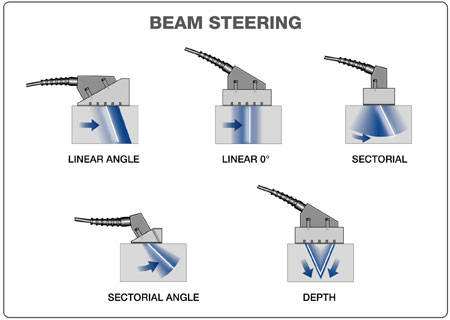Are you also intrigued by what is next after 5G? Beam steering antenna could be the next big technology in the telecommunication industry. Great Scientists from the University of Birmingham in the United Kingdom have developed a new beam-steering antenna that improves data transmission efficiency while also opening up frequencies for mobile communications previously unavailable to current technologies.
What’s Next After 5G?
5G is the successor to 4G in the telecommunications industry. It has substantially quicker download rates, with a top speed of 10 gigabits per second planned. It also has larger bandwidth, allowing it to connect to a greater number of devices.
Researchers have created beam-steering technology for fixed base station antennas used by cellular networks, marking a breakthrough that offers remarkable data transmission efficiency for 5G mmWave applications.
Researchers from the University of Birmingham have presented a new beam-steering antenna that improves data transmission efficiency for “beyond 5G” – and opens up a spectrum of frequencies for mobile communications that are currently unavailable to current technology.
The device can also provide continuous ‘wide-angle’ beam steering, allowing it to track a moving mobile phone user in the same way a satellite dish turns to track a moving object, but at significantly faster speeds, according to experimental results presented today for the very first time at the 3rd International Union of the Radio Science Atlantic / Asia-Pacific Radio Science Meeting.
The technology, developed by researchers at the University of Birmingham’s School of Engineering, has shown significant gains in data transmission efficiency at frequencies across the millimeter wave spectrum, particularly those identified for the 5G (mmWave) and 6G, where high efficiency is currently only possible using slow, mechanically steered antenna solutions.
Prototypes of a beam-steering antenna operating at 26 GHz have demonstrated remarkable data transmission efficiency for 5G mmWave applications.
The beam-steering antenna technology was created to improve the effectiveness of fixed base station antennas at 5G (mmWave) and 6G frequencies, and it can also be used for vehicle-to-vehicle, vehicle-to-infrastructure, vehicular radar, and satellite communications. University of Birmingham is the source of this information.
The gadget complies with all current 5G requirements used by mobile networks. Furthermore, the new technique eliminates the need for the complex and inefficient feeding networks that are common in antenna systems, instead opting for a low-complexity system that enhances performance while being simple to manufacture.
Dr. James Churm, Dr. Muhammad Rabbani, and Professor Alexandros Feresidis, Head of the Metamaterials Engineering Laboratory, developed the beam-steering antenna as a solution for fixed base station antennas, which have low efficiency at higher frequencies, limiting their use for long-distance transmission.
The technology, which is around the size of an iPhone, is based on a metamaterial*, which is a metal sheet with a micrometer-sized pattern of holes. An actuator controls the height of a cavity within the metamaterial, micrometer movements, and, depending on its position, the antenna controls the deflection of a radio wave’s team – effectively ‘concentrating’ the beam into a highly directive signal, and then’redirecting this energy as desired’ – while also increasing transmission efficiency.
The team is now working on higher-frequency prototypes and applications that go beyond 5G mobile connectivity.
The University of Birmingham Enterprise has filed a patent for its next-generation beam-steering antenna technology and is looking for industry partners for cooperation, product development, and licensing.
The foundation technology’s efficiency and other characteristics have been peer reviewed, published in reputable journals, and presented at academic conferences.
*Metamaterials are materials that have been developed to have unique features not found in natural materials. Blocking, absorbing, amplifying, or bending electromagnetic waves are examples of these properties.







